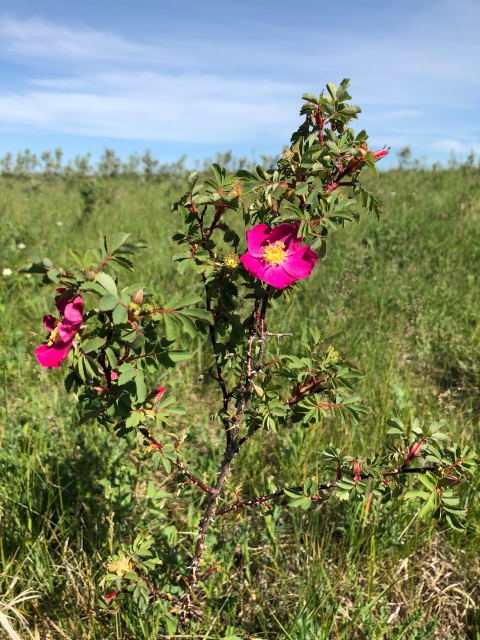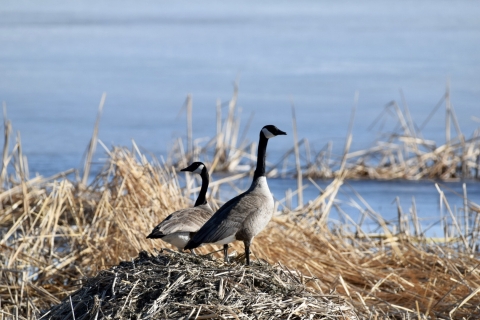About Us
Lake Zahl National Wildlife Refuge encompasses 3,219 acres of fee title land and 604 acres in easements.
The refuge contains two large wetland pools totaling 1,266 acres and 350 acres of seasonal wetlands.
Upland habitat includes more than 1,200 acres of native prairie grassland, in addition to 400 acres of land seeded with tame grass.
Our Mission
Each unit of the National Wildlife Refuge System is established to serve a statutory purpose that targets the conservation of native species dependent on its lands and waters. All activities on those acres are reviewed for compatibility with this statutory purpose.
Lake Zahl National Wildlife Refuge was established to provide habitat and breeding ground for migrating waterfowl, shorebirds, and other wildlife.
As written in the 2008 Comprehensive Conservation Plan for North Dakota National Wildlife Refuges, Lake Zahl is part of a “collection of unique and diverse refuges [that] encompasses a broad range of North Dakota habitat types and landscapes. These refuges provide vital resting and breeding habitat for waterfowl, other migratory birds, and resident fish and wildlife species. Visitors to these prairie refuges experience wide-open spaces, skies filled with migratory birds, places to learn, and welcome solitude. The responsible management of these special places requires adequate funding, dedicated personnel, and successful partnerships. Achievement of this vision ensures that the American people retain a legacy of wildlife and prairie habitats for future generations.”
Our History
Prior to European settlement, northwest North Dakota was settled by Native Americans. The dominant native vegetation was mixed-grass prairie. The most common native shrub was western snowberry (also known as buckbrush or wolfberry) with rose and buffaloberry also being present. Groves of aspen and willow, with an occasional cottonwood, grew on the rims of wetlands.
The land around Lake Zahl was homesteaded in the late 1800's and early 1900's. Farming was the primary land use, followed by livestock production. The Great Depression of the 1930's forced many farmers to sell land and livestock. The early 1940's, however, ushered in a period of prosperity that caused a boom in small grain production. Native prairie is still being broken and converted to cropland today.
Lake Zahl National Wildlife Refuge was established in 1939 by President Franklin D. Roosevelt. In the 1940s, a dam was constructed by the Civilian Conservation Corps to create and maintain the two large wetland pools on the refuge. Ducks Unlimited repaired and upgraded the dam in the 1990s.
The refuge was one of the original release sites for the giant Canada goose reintroduction program, which began in the 1930s to reestablish the species after a drastic decline due to egg gathering and hunting by early settlers.
Lake Zahl National Wildlife Refuge is one of over 565 refuges administered by the U.S. Fish and Wildlife Service and will continue to be managed in a way that honors its founding purpose.

